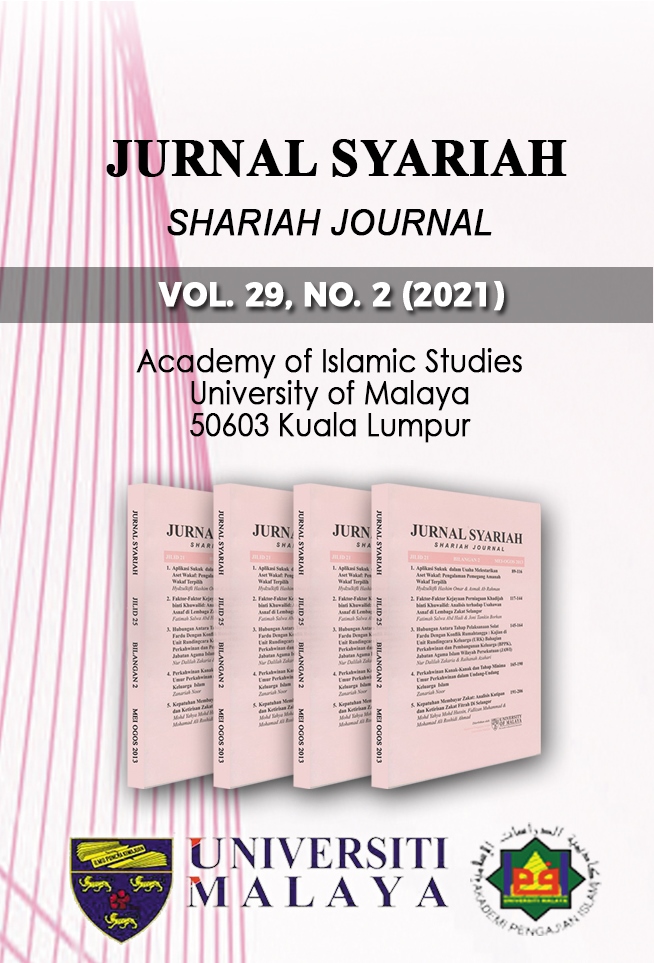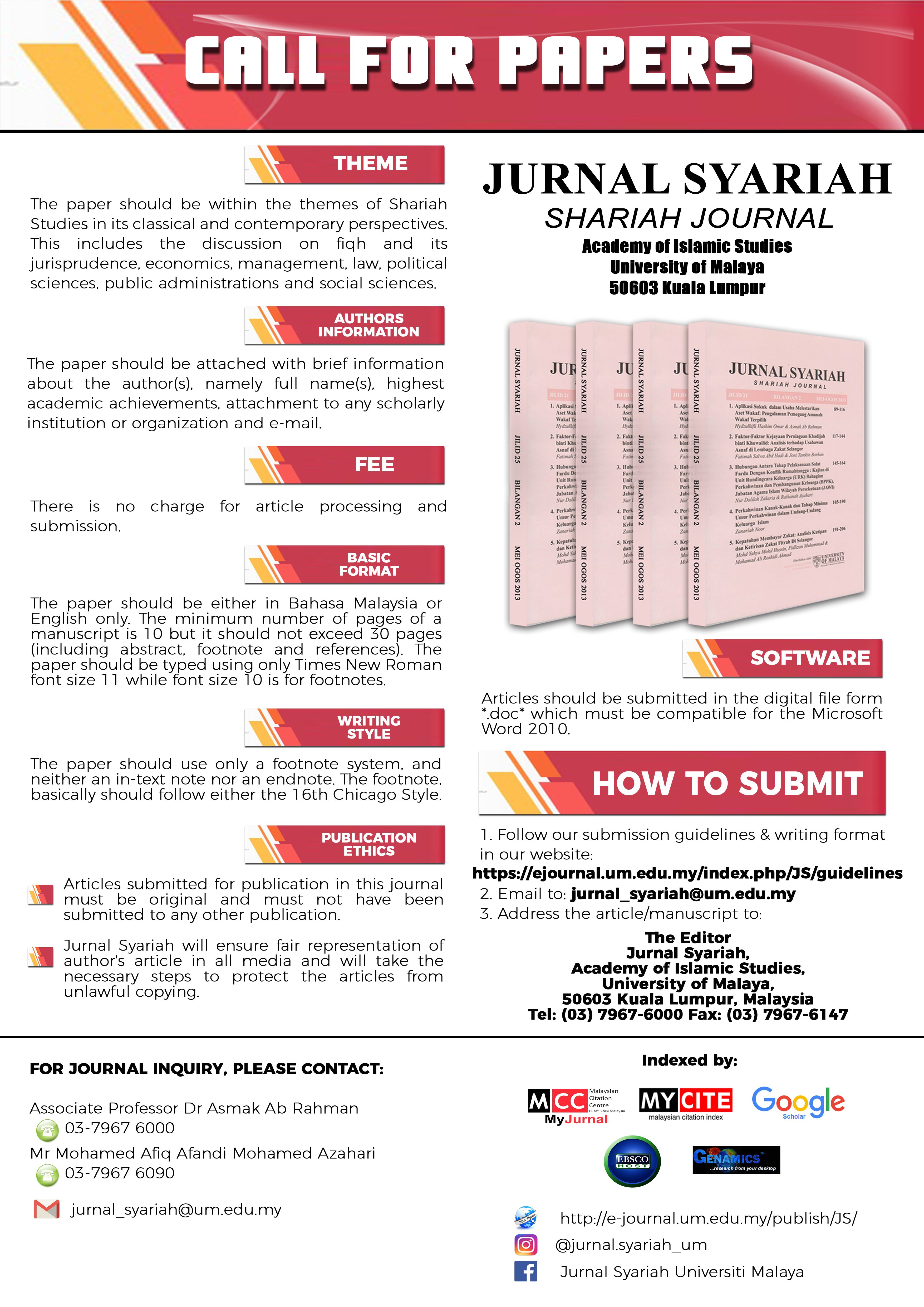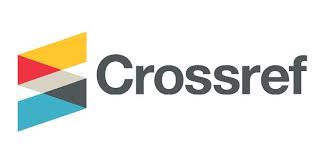SOUTH AFRICAN NATIONAL DEFENCE FORCE (SANDF) DROPS CHARGES AGAINST HIJAB-WEARING OFFICER: CASE IN POINT SOUTH AFRICA
DOI:
https://doi.org/10.22452/js.vol29no2.2Keywords:
religion, freedom, legal pluralism, belief, equality, cultureAbstract
Over the last few decades, a piece of fabric has become a powerful and divisive symbol worldwide. Since the tragic events of 9/11, this piece of fabric has become a topic of great debate, at local, national, regional and international level. The veil as worn by some Muslim women has assumed iconic proportions around the globe. To some it symbolizes piety to others, oppression. To some it is a rejection of Western morality to others, a rejection of modernity. To some, it is a religious statement supporting Islam as a way of living; to others, a political statement supporting violent Islamists. These disparate attributions exemplify the power of nonverbal communication and support the maxim that words and objects contain no inherent meaning; only people assigned meaning. This article discusses the status of religious rights and freedoms under the South African Constitution. One aspect of this change is the change that has affected the various religions, cultures, and customs in South Africa. It is therefore, viewed by many as a constitution for the people of South Africa which includes a Bill of Rights. Historically speaking, for the very first time since colonialism, all religions were guaranteed the of religion. Furthermore, religions, cultures and languages are deep-rooted in the various constitutional provisions, namely, sections 9(3), 15(1) to (3), 30, 31, 185 and 234 respectively. These constitutional provisions are solidified by section 7 which obliges the state to respect, protect, promote and fulfil the provisions set forth in the Bill of Rights. The article concludes with an argument for the recognition of plurality of religions and religious legal systems in South Africa.
Downloads
References
BBC.com, http://www.bbc.co.uk, accessed on 20 December 2020.
Bhattacharjee A., Muslim Law and the Constitution, 2nd ed (Calcutta: Eastern Law House, 1994).
Bible Hub, http://www.biblehub.com, accessed on 20 December 2020.
Coertzen P., ‘Constitution, Charter and Religions in South Africa,’ African Human Rights Law Journal (2014): 127-142.
eNCA, ‘SANDF drops charges against hijab-wearing officer,’ www.enca.com, accessed on 31 December 2020.
History, ‘September 11 Attacks,’ http://www.history.com, accessed on 14 July 2020.
Muslim Judicial Council (SA), http://www.mjc.org.za, accessed on 14 July 2020.
Misra S., ‘Sources of Law in Hindu and Muslim Jurisprudence: A Comparative Study,’ 10 & 11 Islamic & Comp. L.Q 165 (1990-1991).
Mofokeng L., ‘The Right to Freedom of Religion: An Apparently Misunderstood Aspect of Legal Diversity in South Africa,’ Law Democracy and Development, vol. 11/2 (2007): 129-130.
Rautenbach C. (ed.), Introduction to Legal Pluralism in South Africa, 5th ed. (South Africa: LexisNexis, 2018).
Rautenbach C., ‘Muslim Marriages in South Africa,’ Griffin’s View on International and Comparative Law, vol. 7/1 (2006): 55-74.
Rautenbach C., ‘Some Comments on the Current (and Future) Status of Muslim Personal Law in South Africa,’ Potchefstroom Electronic Law Journal, vol. 2 (2004): 1-34.
South African Law Reform Commission Project 106 – Islamic Marriages and Related Matters (July 2003).
South African Law Reform Commission Project 59 – Islamic Marriages and Related Matters (May 2000)
Warren C., ‘Lifting the Veil: Women and Islamic Law,’ Cordoza Journal of Law & Gender, vol. 15/1 (2008): 33-65.
Yusuf Ali A., The Holy Quran: Text, Translation and Commentary (Lahore: Ashraf Press, 1938).
Statute
Constitution of the Republic of South Africa 1996.
Downloads
Published
How to Cite
Issue
Section
License

This work is licensed under a Creative Commons Attribution-NonCommercial 4.0 International License.
COPYRIGHT: All rights reserved. Not allowed to be reproduced any part of articles and contents of this journal in any form or by any way, whether electronic, mechanical, photocopying, recording or otherwise without permission in writing from the Chief Editor, Jurnal Syariah.



















